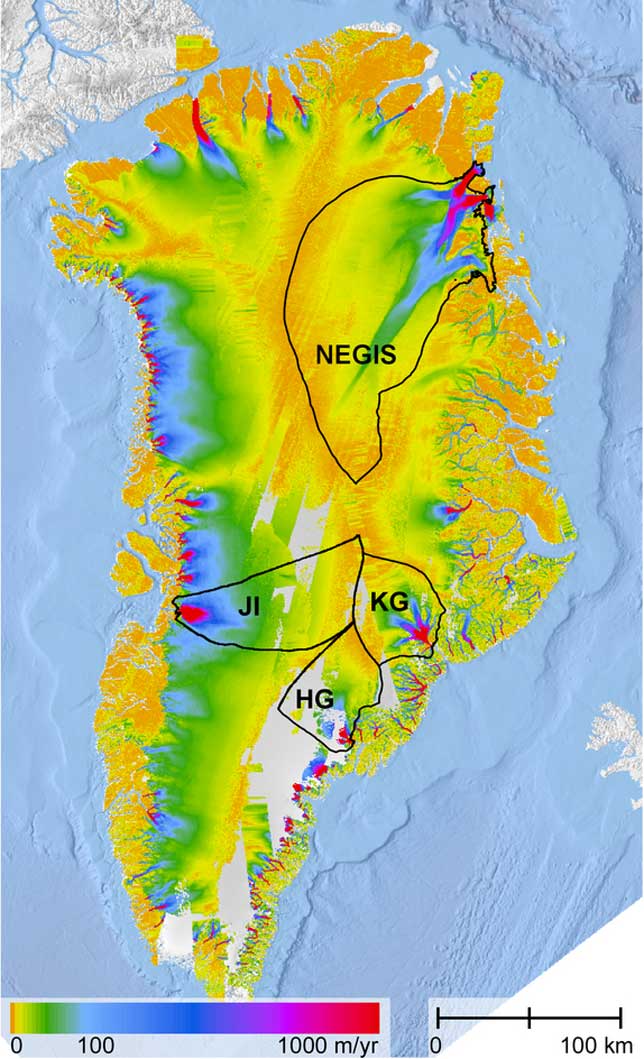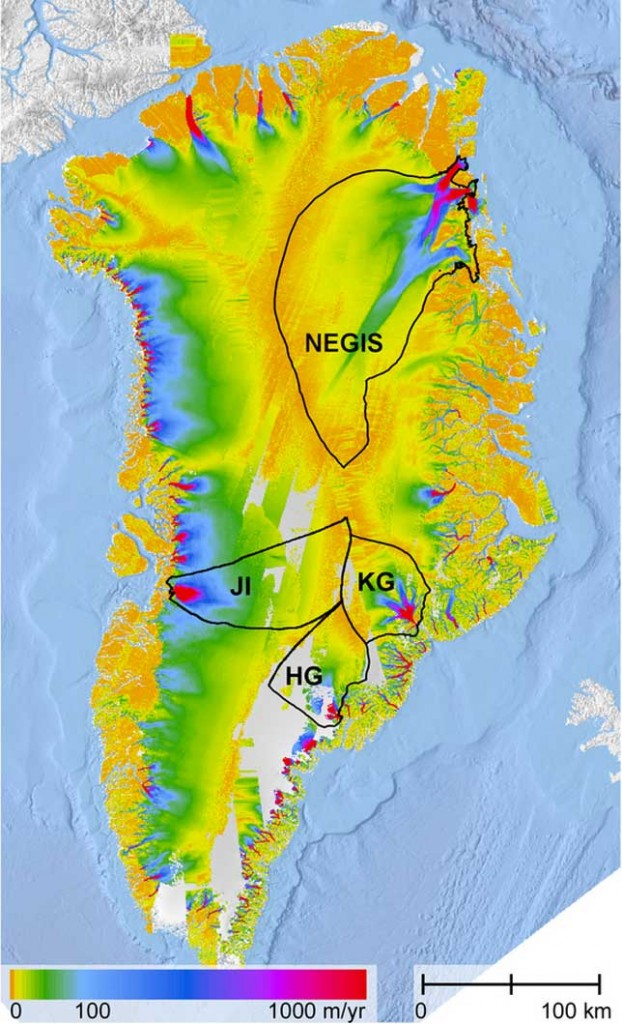March 18, 2014 – There are two large banks of frozen water on our planet – Antarctica and Greenland. And although the former seems to be maintaining its mass there are some disturbing signs that that is not the case with the latter.
In the latest research reported in Nature Climate Change, Greenland’s northeast ice streams are reported to be speeding up in their descent to the sea. Extending over 600 kilometer (372 mile) these long ice streams are undergoing a “sustained dynamic thinning….after more than a quarter of a century of stability.” The glaciers involved represent 16% of the total Greenland ice sheet and have been given the designation, NEGIS which stands for Northeast Greenland Ice Stream. You can see the extent of the ice streams on the accompanying map.
So what has this to do with sea level?
The NEGIS glaciers involved have previously not been factored into existing climate models related to sea level rise. The increase in ice loss from this new source amounts to 15 to 20 metric gigatons per year, it means that in total, including melt from Greenland west coast glaciers, the ice-bound island is adding almost 50 metric gigatons of ice to the ocean.
The paper concludes, “As recent model projections suggest, ocean warming around Greenland may reach almost double the global mean by 2100 and the recent assessment report of snow, water, ice and permafrost in the Arctic projects the largest and most pronounced air temperature increase over northeast Greenland, increasing the risk of continued mass loss from this sector of Greenland.” A rough translation would be “we are going to see sea levels rise faster than we previously had modeled as a result of rising temperatures in the Arctic over Greenland.”
The rising of sea levels has been one of the more challenging aspects of predictive science. The Intergovernmental Panel on Climate Change (IPCC) has provided a projection in global sea level rise of 74 centimeters (29.13 inches) by 2099. With the additional ice volume from the NEGIS that number may be revised upward.
For the Pacific and Indian Ocean island nations already at risk this is a doomsday scenario. These nations recently signed the Majuro Declaration stating their unequivocal belief in needed action to address what is for them a fearful prospect.
The same may be said for coastal cities and seaports around the world. Without major commitments to reducing greenhouse gas emissions, and without a major investment in infrastructure, they are vulnerable to the ice dropping into the sea from the NEGIS as the poles heat up.
Related articles across the web





















Len, there was an article on this topic in the September 2013 issue of National Geographic. Their doomsday estimate if all ice melted was a sea level rise of 216 feet, of which 25 feet would be contributed by just Greenland. So Greenland on its own could cause all sorts of coastal effects.
The current Greenland melting begs a question. Would it be possible to pipe meltwater to tankers rather than have it flow into sea water, as long as the process of piping did not accelerate the flow? It would not be a material mitigation of ocean level change, but at least some freshwater that would otherwise become salinated could be put to good use.
Hi Mark, I think piping freshwater runoff from glacial streams in Greenland would have many challenges. There would be suspended materials to deal with. There would be the harsh environment. There would be the instability of the ice itself from both movement and melt.